How Mercedes Vision EQXX traveled over 1,000 km on a charge
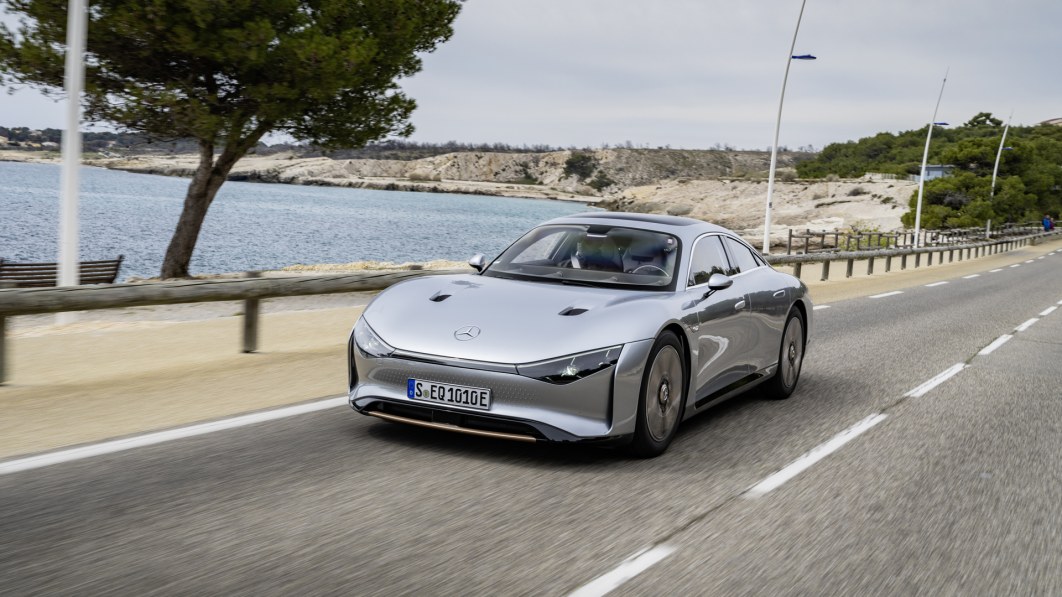
NICE, France – The first Mercedes-Benz electric vehicle to drive more than 1,000 kilometers (621 miles) on public roads without stopping to charge brought Jasmin Eichler to tears. It’s rare to see someone in the auto industry get truly choked up when they announce a new engineering accomplishment, but Eichler, director of future technologies for Mercedes-Benz AG, without question put her whole heart into the Vision EQXX, which went from harebrained scheme to success in around two years.
The journey, dubbed MissionXX, ultimately amounted to 1,008 km (626 miles) from Sindelfingen, Germany, to Cassis, France. Along the way, it consumed just 14 kilowatt hours of energy per 100 miles. For comparison sake, the most-efficient EV listed on the EPA website, the Tesla Model 3 Standard Range Plus, needs 24 kWh to go 100 miles. That’s an immense difference.
It was accomplished through rain and sunshine, through construction traffic and free-flowing highway miles – in other words, totally normal conditions – and yet still arrived with enough energy left for another 87 miles or so. Mercedes isn’t saying exactly how big the brand-new battery pack in the EQXX is, just that is has “almost 100 kWh of useable energy” and has an exceptional energy density of more than 400 watt-hours per liter.
Eichler says this highly efficient battery is an example of the fact that there are right ways and wrong ways to build a 1,000-km EV.
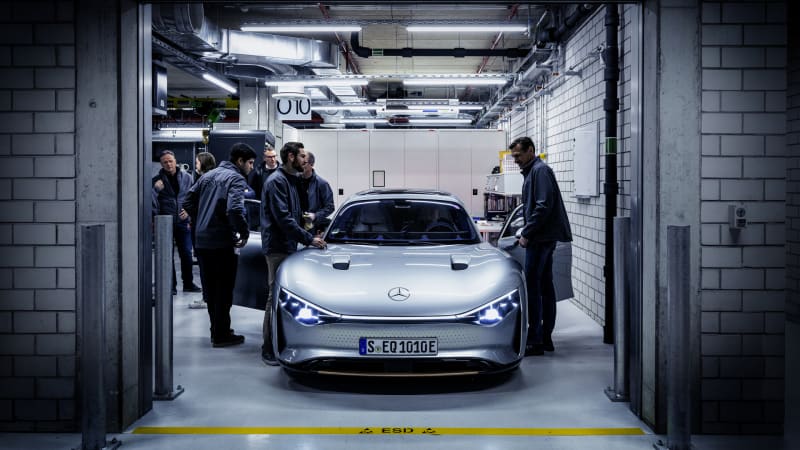
“The 1,000 kilometers themselves, anybody could probably do,” she said, adding that engineers could logically solve the problem by throwing enough cells in the battery to achieve that distance and call it a day. Instead, the MissionXX team went hunting for every possible efficiency gain in an EV that could also, conceivably, look like someone’s daily driver. Because the real goal of this mission wasn’t just the distance target, but achieving an efficiency level of under 10 kWh per 100 km.
To do that, the best place to start is aerodynamics, as they are vitally important to efficiency. According to Teddy Woll, head of aerodynamics for Mercedes-Benz, almost two-thirds (62%) of the energy in the battery is needed just to push the air out of the way. Another 20% is used to overcome rolling resistance, and other factors account for the final 18%.
Ultimately, Woll’s team got the EQXX’s co-efficient of drag down to 0.17 – well beyond the slipperiest car currently on the market, the Mercedes EQS, which goes through the air with a cD of 0.20. The Tesla Model S is ever-so-slightly behind at 0.201. This achievement is made all the more impressive as Mercedes wanted to keep the car as close to “normal” in appearance as possible and therefore free from certain aerodynamic tricks like the rear wheel spats used on past ultra-efficient cars like the GM EV1 or VW XL1 (they were good for a cD of 0.19).
Instead, the team used 20-inch magnesium wheels that are big, narrow and minimize wind resistance with lightweight aero-covers. Bridgestone even designed ultra-low rolling resistance custom Turanza Eco tires for the EQXX where the writing on the side barely extends from the surface. The underside, as in many EVs, was made as flat as possible, but the Vision EQXX can extend that surface area by about 8 inches with an automatic rear diffuser that moves both down and out, depending on driving speeds and other conditions. That’s enough for a 0.01 gain in cD, which meant that it was worth spending the extra weight of the system, according to Woll.

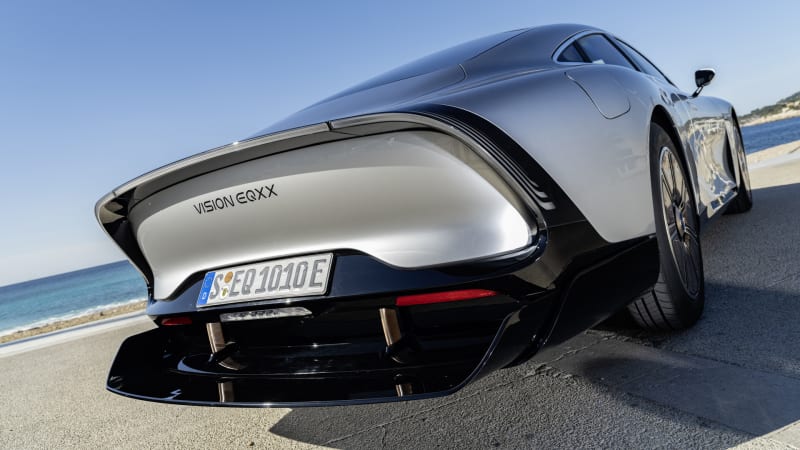
Lightweighting was also important from the beginning, spurring the creation of new technologies and reimagining of old ones. It was also a process that never stopped: In the three months between the EQXX’s unveil at CES in January and the 1,008-km drive in April, engineers eliminated another 88 pounds from the vehicle.
“It was kind of, internally, an, ‘Oh, shit’ moment,” Eichler said of the unveil. “We were like, ‘Oh my God, now we have to do it.’ And I think that was kind of when we really ramped it up.”
Her team also knew every little bit helps, and ended up grouping the car’s technologies and components into three general bins: parts from production cars, fanciful “what if” items (which were possible, in part, because Mission XX basically did not have a real budget limit) and then the most important category: highly efficient technologies that could perhaps soon be found on production models.
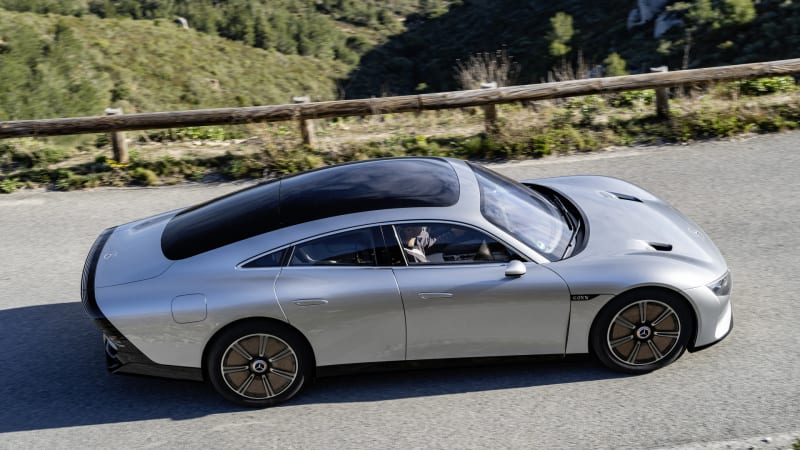
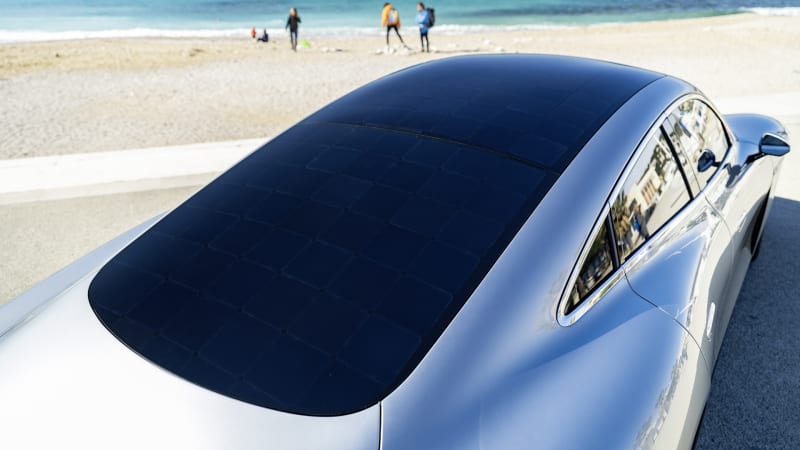
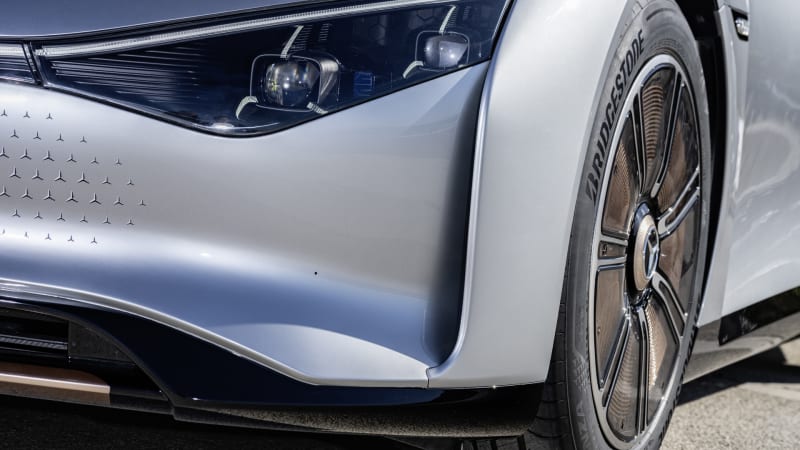
For example, on the roof, solar panels feed energy to the car’s non-traction electrical components: the screen, HVAC, wipers and the like. By running some parts of the car with solar energy – they can also obviously be supplied by the battery at night – the solar panels add up to 16 miles of extra range.
Then there was the matter of battery cooling. There’s long been debate in the EV world about whether active or passive cooling is best for an EV battery. In the Vision EQXX, Mercedes has opted for a mostly passive cooling solution, which it says adds around 2% of range as it is the most aerodynamic solution. However, active on-demand drivetrain cooling still happens when shutters on the front of the vehicle open to let air move around the battery and then to outlets in the hood.
Future concepts for sustainable materials that could be used in production cars dominate the Vision EQXX’s interior. There’s shag carpet made from bamboo fibers on the floor. The seats have built-in speakers that are held in place using 3D-printed UBQ thermoplastics made from household trash. There’s also Dinamica microfiber made from recycled clothing and PET bottles, and components grown from mushrooms.
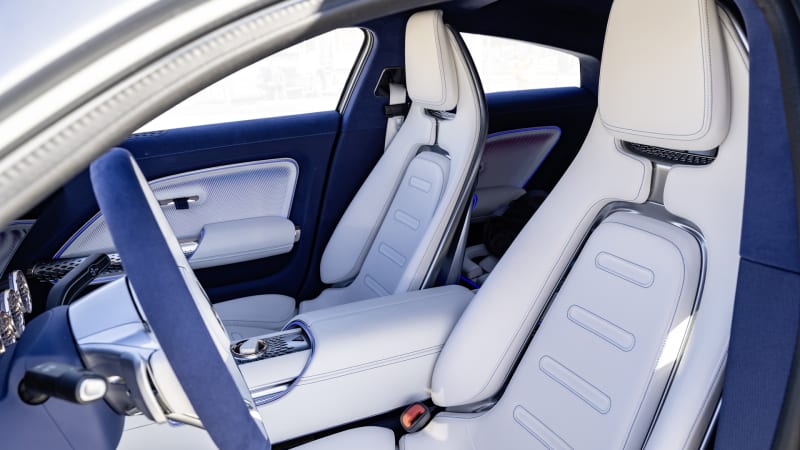
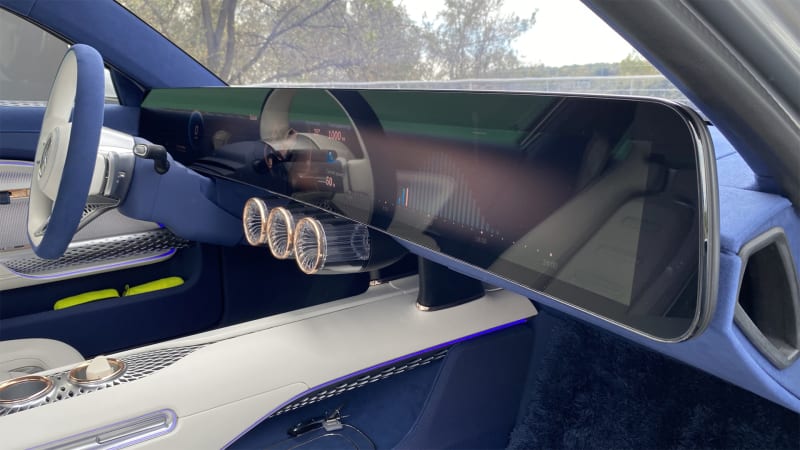
There were always two people in the car during the drive, but with a driver weight limit of 198 pounds. The rear doors don’t open. And NVH was not a top priority. This is not a quiet car at the same level of other luxury EVs: Slight clunks are audible, and you can really hear the regenerative brakes kick in at high levels. The seats are not exactly plush, either, but the drive team was made up of MissionXX engineers, not professional drivers, so they knew what they were getting into. German engineering outfit TüV Süd was involved during the drive to prove that all 1,008 kilometers were indeed driven without recharging.
During a 30-minute ride in the Vision EQXX – Mercedes was not about to let journalists pilot such an insanely expensive vehicle on public roads – feeling all of these technologies come together showed just how valuable a moonshot mission like this can be. The car easily cruised the short urban route in Nice, but there wasn’t much to experience in terms of acceleration or handling. The EQXX seemed capable enough, but an enhanced driving experience is not the point here. On the 1,000-km drive, the team stayed under the speed limit, they said, and the car is limited to a top speed of 140 kmh (87 mph). Mercedes drivers are not likely to accept that kind of limitation in the real world, but this mission was built upon kWH-per-km instead of km-per-hour.
Things will get really, really exciting when Mercedes starts assigning its performance teams to the next MissionXX-type project. Anyone who’s been behind the wheel of an AMG model knows that Mercedes can handle the handling. It’s now bringing its efficiency skills to the same level, to find the perfect blend between acceleration exhilaration and letting bladders decide when to stop for a break and not the state of charge.
That integration is certainly coming. For now, it’s worth trying to imagine the depth of Jasmin Eichler’s pride at bringing so many efficiency aspects together, creating a truly marvelous EV. This mission was a success. On to the next one.



